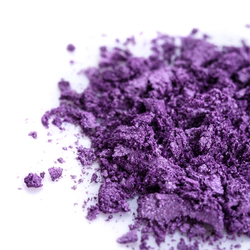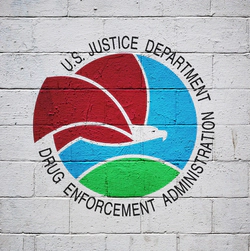Emerging Synthetic Drug Dubbed ‘Purple Heroin’ Claims Lives in Post-Fentanyl Era
America’s illicit drug market has moved past fentanyl and now there is a new, deadly drug to be aware of.

Some experts say that we are now in the “post-fentanyl era.” The fentanyl era was bad enough—how bad is it going to be in the post-fentanyl era? What new drugs are we going to see?
Brorphine is a recent addition to the post-fentanyl illicit drug market in the U.S. and other countries. No matter how many lives we continue to lose to fentanyl and its dozens of analogs, no matter how hard we fight back, more synthetic drugs are being introduced to the illicit market. Some of these new drugs are as strong or stronger than fentanyl and we are already losing our loved ones to them.
Brorphine Is Nicknamed “Purple Heroin”

This drug earned its nickname because it often has a purple color. It may also be white or gray. But no, it’s not really heroin. It’s a new type of synthetic opioid drug. It is more powerful than morphine but has less potency than fentanyl.
Why would anyone bother inventing or manufacturing a new opioid drug? Here’s why: Criminal chemists constantly manipulate their formulas to come up with new drugs they can sell. Every time they develop a new molecule that will get people high, they can announce that their product is legal. And for a while, it will be legal. Police won’t be able to seize these drugs. The Drug Enforcement Administration won’t be able to arrest traffickers. Then legislators draft the legislation needed to make the formula illegal. At that point, manufacturers, traffickers, dealers and users of the drug can be arrested. That process usually takes a few years.1
Attempts to Eliminate Fentanyl Spawned New Types of Synthetic Opioids
In the last several years, there has—understandably—been an all-out battle to eliminate fentanyl from our illicit drug supplies. The U.S. government has applied intense pressure on foreign governments to get them to outlaw the manufacturing of fentanyl and similar drugs. For example, the Chinese government banned the manufacturing of many of these drugs, but there are more than 20,000 chemical and pharmaceutical companies in China. Therefore, that ban may not reduce the quantity of fentanyl or precursor chemicals leaving the country.2 It’s not possible to effectively monitor shipments leaving from these tens of thousands of companies scattered across the nation.
As a result of the pressure applied to the fentanyl market, more chemists and traffickers have sought to develop new drugs that circumvented this pressure and all the laws attempting to ban the many kinds of fentanyl being trafficked. It’s simply a constant game of cat and mouse played by chemists and drug enforcement personnel. The big losers in this game are those who buy drugs on the illicit market.
Controlling Brorphine Supplies on the Market
Brorphine was first found on the illicit market in 2019, after being newly synthesized in 2018. Originally, it was being developed as an opioid that would reduce pain without causing euphoria.3 Chemists working in the illicit market began to synthesize this drug and it soon began showing up in drug-related deaths.
Brorphine joins isotonitazene and eutylone, other recent arrivals to the illicit market, as a drug of abuse that can cause overdose deaths.4 Chemically, it is similar to fentanyl and isotonitazene.
At the end of 2020, the Drug Enforcement Administration (DEA) issued its first warning about brorphine and notified the country that they planned to issue a ban on this new drug. Then in early 2023, the DEA announced that brorphine had been placed into Schedule I of the Controlled Substances Act (CSA), meaning that it has the potential to be abused and has no accepted medical uses.5 At this point, it becomes illegal to traffic or possess this drug.
Loss of Life Due to Brorphine
In 2023, the DEA announced that 21 people had died after obtaining brorphine from the illicit market. Those deaths took place between August 2019 and June 2021[5]. Additionally, brorphine has been found in 157 samples sent to federal, state and local forensic labs between April 2020 and June 2022.
A coroner in Illinois, one of the states hardest hit by brorphine, noted that this drug can cause cardiac arrhythmias and sudden cardiac death[6]. Most people dying from the use of opioids, synthetic or otherwise, stop breathing because of an opioid’s intense effect on the lungs. Brorphine has this additional deadly quality.
Brorphine is likely to be mixed with other drugs and then pressed into counterfeit prescription drugs. In one incident, a 43-year-old man died from a combination of brorphine and another novel synthetic opioid, isotonitazene. He also had THC from cannabis and diphenhydramine in his system when he died. Before his death, he reported that he had consumed what he thought was a 30-milligram Percocet tablet. His autopsy report listed his death as resulting from “mixed drug intoxication”.6
Brorphine’s Life Cycle

By the time brorphine was added to Schedule I of the CSA, the number of seizures of this drug from the illicit market were already falling. Factually, it is fairly futile to try to eliminate these drugs by making them illegal. By the time legislation catches up, the newly-illegal drug is already being replaced by a new formulation. Deaths from the old drug will fall and deaths from the new drug will begin to climb.
This is the pattern for every new synthetic drug. It arrives on the market to replace an earlier, similar drug. The number of seizures of the new drug climbs, and then six to twelve months later, the number of seizures begin to fall. About that time, legislation catches up with it and it is finally illegal to possess or sell. After drugs move through this life cycle, they can still be found on the illicit market but in smaller quantities.
Brorphine has been found in illicit drug supplies in Canada, Estonia, Germany, Latvia, Sweden, and the U.S. since April 2019, according to the DEA.3 In the U.S., it has primarily been detected in the Midwest.4
How to Protect People from Taking Brorphine and Dying
There is really only one way. And that is to prevent them from taking any drug. Brorphine’s life cycle followed isotonitazene’s life cycle which followed fentanyl which followed heroin and prescription opioids. There are already new synthetic opioids following brorphine and when those have died out, there will be more. Following brorphine so far are metonitazene, protonitazene, etodesnitazene and flunitazene, four of a group of new synthetic opioids called nitazenes.7
There are always going to be new drugs on the illicit market. Effective drug prevention must begin at early ages and be repeated each year during a child’s education. If children can be prevented from ever using drugs, we can begin to reduce our incidence of addiction and death from these drugs a few years down the road.
Of course, anyone who is already using drugs or who is addicted must get the help they need to break free. With both these fronts being addressed at one time, we have a greater chance of success at reducing our losses to drugs like these.
Sources:
-
“Fentanyl Flow to the United States.” Drug Enforcement Administration, 2020. DEA ↩︎
-
“Chemical industry in China: The current status, safety problems, and pathways for future sustainable development.” ScienceDirect, 2020. ScienceDirect ↩︎
-
“DEA Permanently Lists Opioid Brorphine as a Schedule I Controlled Substance.” Texas Medical Association, 2023. TMA ↩︎ ↩︎
-
“The Rise and Fall of Isotonitazene and Brorphine: Two Recent Stars in the Synthetic Opioid Firmament.” Journal of Academic Toxicology. JAT, 2022. JAT ↩︎ ↩︎
-
“https://pubmed.ncbi.nlm.nih.gov/33759494/.” Federal Register, 2023. Federal Register ↩︎
-
“New Synthetic Opioids: Clinical Considerations and Dangers.” Springer Link, 2023. Springer Link ↩︎
-
“Synthesis, Chemical Characterization, and μ-Opioid Receptor Activity Assessment of the Emerging Group of “Nitazene” 2-Benzylbenzimidazole Synthetic Opioids.” National Library of Medicine. NLM, 2021. NLM ↩︎






 ®
®